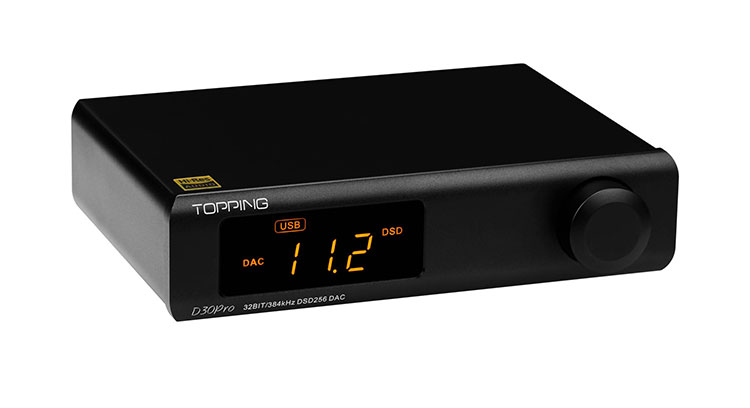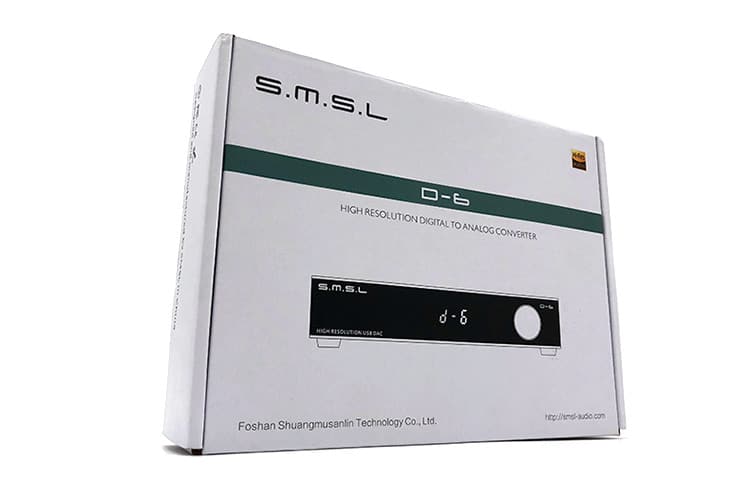Synergy
Pairings
Getting the most out of the SMSL D-6, I paired it with the amplifier section of the Burson Conductor 3 Reference to check out its technicalities and sound profile.
Using the Audio-Technica ATH-ADX5000, I can tell that I am losing on the detail retrieval aspect but it soaked up all the benefits of the D-6 such as its wide soundstage and punchy bass to balance out the excess energy of the treble.
The ATH-ADX5000 found its best compromise when I changed the amplifier to the SMSL HO100, which by the way stacks pretty well with the D-6. This chain tweaked the treble region towards being more friendly even though it is slightly more bloated in the bass region and less technical overall than the Conductor 3 Reference.
Putting listening enjoyment first, the Sennheiser HD600 fits the D-6 and HO100 pairing well. It added soul and flavor to the music dampening the uptick in vocal energy while still retaining oomph and sparkle in instruments.
Select Comparisons
SMSL DO100
$239
Technical
Looks may suggest otherwise but both DACs are capable of outputting a balanced signal. The full-sized XLR interface of the DO100 is utilizing the two ES9038Q2M chips from ESS while the D-6 is more unconventional requiring TRS plugs to enjoy listening balanced.
Capability-wise, even with the slightly higher price tag of the DO100, users can expect the same future-proofed PCM and DSD spec with the 2nd generation XMOS in both devices. The DO100 also uses the same QCC5125 as the D-6 so both devices are well adapted to wireless streaming.
Design
Formed from a single block of aluminum, the main chassis of the DO100 wraps around the front and rear panels for a more unified look in difference from the obvious three-piece assembly of the D-6. But for my taste, the lower and squared-off design language of the D-6 is the tidier-looking DAC for a minimal desk setup.
The face of the DO100 is given the tempered glass treatment, a slight upgrade from the PMMA panel used in the D-6. The dark glass hides effectively the seven-segment display and serves as a nice complement to the less shiny volume control.
But, unlike the well-arranged rear of the D-6, the DO100 even with its bigger build feels more cramped towards the input section with the XLR outputs using up most of the real estate.
Performance
An immediate difference in the bass of the DO100 is its less aggressive yet better-dispersed quality making the D-6 the more muscular sounding. Bass guitars don’t just image farther in the DO100, but since the D-6 has less sub-bass presence, it also develops a more gripping and crisper rumble.
Where the two DACs share a bit of identity is in the upper midrange shout that can get artificially thin with ringing. Dividing the performance of the two, the DO100 edges out the D-6 in having better room definition and weight on acoustic genres.
Surprisingly, guitars are more relaxed on the D-6. Nevertheless, the DO100 creates strings that are more energetic and distinct.
The D-6 is more steely and rigid in forming cymbals than the splashier take of the DO100. The DO100 while not as forward in treble energy as the D-6 can also get fatiguing when listening for long periods.
While the staging width of the D-6 is not intimate by any means, the DO100 manages to place its farthest image just a tiny bit further than what I heard with the D-6. Objects are similarly small, but placement feels much more natural.
xDuoo MU-601
$129.00
Technical
Those already adapted to the USB-C life will find both DACs easy to use, with the MU-601 adding further interest by including two of the said sockets. Still, the D-6 is more flexible with its wider array of digital inputs and is also better suited to those looking for a compact but balanced capable DAC.
Inside, differentiations continue with the ES9018K2M DAC chip installed in the MU-601 and its use of an XMOS XU208 USB module taking lower compatibility with music files of only up to 32bit/384kHz PCM and DSD256.
Depending on the chain, spending more on the D-6 will show its merit in having the capacity to act as a preamplifier, a feature lacking in the MU-601. xDuoo’s little DAC however can still be more appealing to those looking to save a few bucks and simply wishing for a plug-and-play DAC.
Design
With sharp corners in both devices, xDuoo has peppered in a touch of gentleness towards the front of the MU-601 by curving the upper lip against the flatter façade of the D-6. The punched pane towards the side of the MU-601 also gives it a less serious vibe than the stiffer covert look of the D-6.
Observing the black glass panel used by xDuoo on the MU-601 will be more noticeable against the rest of the case since it doesn’t have the same blackened exterior as the D-6. Missing a volume wheel, it features a toggle switch, a smaller seven-segment display, and a logo that lights up.
Performance
The MU-601 is the less clinical and insightful sounding device starting with its bouncier mid-bass response which against the D-6 lacks in subtleties and roominess rounding off sustained notes.
On easier passages like bass guitar plucks, the MU-601 is still able to push out enough information trying to not smear too much.
For a more fluid and warmer midrange, the MU-601 is the more enjoyable listen. The main body of guitar strings will have more heft and flavor but expect a noticeable zing extending upwards of the upper midrange which is quite similar but less than D-6.
Violins are more forward and thinner in the D-6 but it wins points in being the more engaging sound. Performing a live audience, the timbral difference separates widely with the D-6 being the more holographic and dynamic DAC versus the more washed out and cluttered cheers coming from the MU-601.
For image size, bigger objects can be heard scattered around the MU-601 which somehow identifies with its more intimate soundstage.

Topping D30 Pro
$399.99
Technical
Translating the digital domain using four CS43198 DAC chips from Cirrus Logic, Topping is underscoring the D30 Pro’s capacity to utilize eight separate analog channels integrated into a fully balanced circuit.
This effort does not simply place the D30 Pro away from the usual ESS and AKM DACs but also doubles on the dual DAC chip implementation seen on the D-6.
While unique in its internal DAC configuration, the XMOS XU208 USB module used in the D30 Pro limits the playback of songs to DSD256 and 32bit/384kHz for PCM. And towards the rear, even though the D30 Pro has a full-sized XLR for easier downstream compatibility, a missed opportunity is the lack of a Bluetooth receiver for wireless streaming.
So, considering that the D30 Pro is asking for more than twice the price of the D-6, there is still some give and take upon checking out the specs.
Design
Even though the D30 Pro is the bigger device, I’ll put the easier lines used by Topping as more graceful since the D-6 reflects more towards a sterner overall impression. But the presence of a full black plexiglass panel in front of the D-6 upturns its elegance making it appear more expensive than it is.
To keep its compact scale, SMSL downsizes everything from the volume wheel, seven-segment display, balanced output, and even the power inlet versus the ones fitted on the other DAC. The D-6 achieves this feat without eliminating any noticeable feature available in the D30 Pro.
Performance
Topping seems to be going for a compromise between warmth and linearity. The ambiance I get out of the D30 Pro feels is easy and fun to listen to while remaining realistic and sober.
Not as energetic and punchy as the D-6, the D30 Pro is less tight in the bass region replacing it with an immense and sweeter presence having more elevated sub-bass. At times, it does overtake the D-6 in quantity, especially with synth beats and bass guitars impressing with a more delineated quality.
There is added depth and complexity in sifting through duets and subtleties in the vocal region even though the D30 Pro is less serious and more pliant. This makes the midrange of the D30 Pro more likable in my opinion opening up nicely with its fuller body complimented by a more balanced and airy extension.
Obvious improvement in detail retrieval is felt in the treble region where the electric guitar returned to be more nuanced and stimulating rather than shrill. Similarly, I can listen to the D30 Pro longer having a less forward rendition of the violin since the D-6 adds speed and vitality to the equation.
Between both devices, the D30 Pro is the more intimate sounding enriched with precise placement and easier separation. The D-6 on the other hand makes objects appear smaller creating an illusion of isolated presence.
Our Verdict
The SMSL D-6 DAC is a brave soldier firm in challenging the competition with its AK4493 chip providing an option for those looking to get a balanced capable compact device.
Without breaking the bank, users will get to access a satisfyingly clear and spacious sound that if paired well will be even more enjoyable. And given its size, there is no compromise in features and IO which further strengthens its value.
Having a TRS plug for the balanced output could still be a headscratcher for some but it does make sense and could be the new norm for compact devices. And similarly, the reintroduction of an AKM DAC chip back in SMSL’s lineup more than likely mean that we will see more AKM devices in the future.
SMSL D-6 DAC Technical Specifications
- DAC: AKM AK4493 * 2
- Input: USB/Optical/Coaxial/Bluetooth
- Output: RCA/TRS
- THD+N Weighted: 0.00011% (118.5dB)
- Dynamic Range: TRS 123dB, RCA 120dB
- USB Compatibility: Windows 7/8/8.1/10, Mac OSX 10.6, Linux
- Playback:
- USB 32bit/768kHz, DSD 2.8224-22.5792MHz
- Opt/Coa 24bit/192kHz
- Weight: 450g




